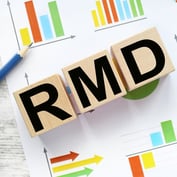With the recession getting further and further into our national rear-view mirror, America is setting new economic records all the time.
One of the new marks is the number of millionaires in America: According to a report released last month by the Spectrem Group, the number of U.S. households with a net worth of $1 million or more reached 9.63 million in 2013, an increase of more than 600,000 from 2012. We also set new records highs in the number of households with a net worth of $5 million and above and those with $25 million and above.
The big questions for financial advisors are: How are these affluent individuals investing their money? And what are they spending on traditional estate planning vehicles? Several recent surveys shed some light on that idea.
One thing is for sure: They’re not just sitting on cash. In 2013, mass affluent clients, which Spectrem defines as those with $100,000 to $1 million, not including their primary residence, had just 20 percent of their portfolios in bank deposit products. The ultra high net worth segment — those with $5 million to $25 million, not including their primary residence — had only 11 percent in cash.
The 2013 Fidelity Millionaire Outlook similarly found that high net worth individuals are expected to keep their holdings in the market, rather than in cash. Among those with more than $5 million, 10 percent planned to decrease their cash holdings, according to the Fidelity report.
Most of that money is going into stocks, especially among the wealthiest Americans. Of those surveyed by Fidelity, 60 percent of rich households planned to invest more in equities during the next 12 months, compared with only 31 percent among the mass affluent.
Another Spectrem report, released earlier this year, shows the increased tilt toward exchange-traded funds and away from mutual funds. Mass affluent investors have shown a significant increase in ETF ownership since 2009, with the average balance in these accounts doubling since then.
That report also found that one in five investors in the wealthiest group say they will consider investments in hedge funds or other alternative investment vehicles during the next 12 months. In addition, 37 percent of that top group said they planned to make international investments in the next 12 months. That number drops as you move down the asset scale, with just 28 percent of those in the $1 million to $5 million group — what Spectrem calls millionaires — making the same claim, and just 17 percent of mass affluents.
The breakdown of the Spectrem survey revealed one nugget that is fascinating but probably not so surprising: Among millionaires, the people most likely to be aggressive with their investments are business owners or entrepreneurs.
So what are they spending their money on when they’re not investing? For the top asset group, the leading expenditures were for vacation, leisure travel, and home improvement. The $100,000 to $1 million group spent the most on automobiles and leisure travel.








 June 26, 2014 at 02:10 PM
June 26, 2014 at 02:10 PM










